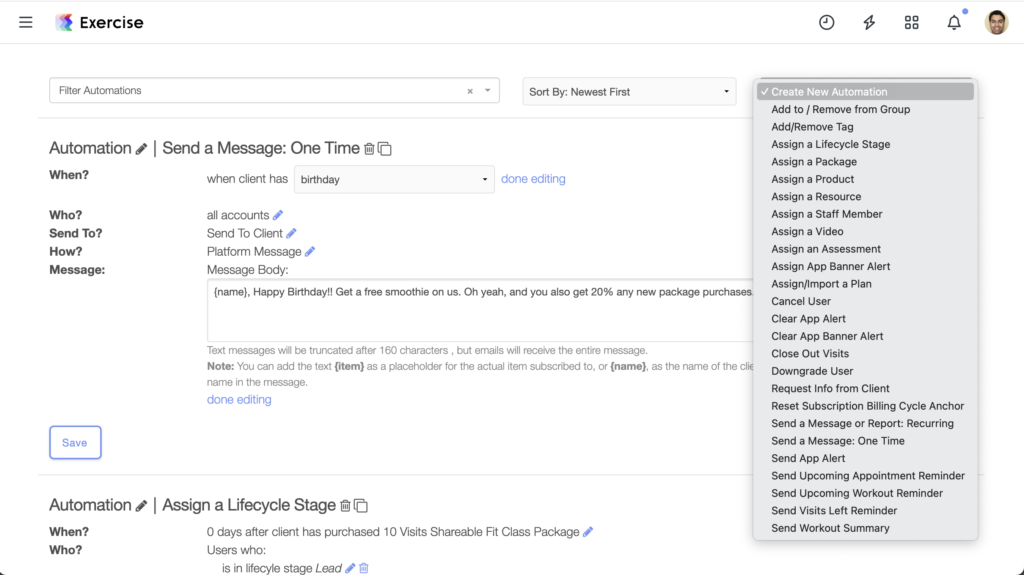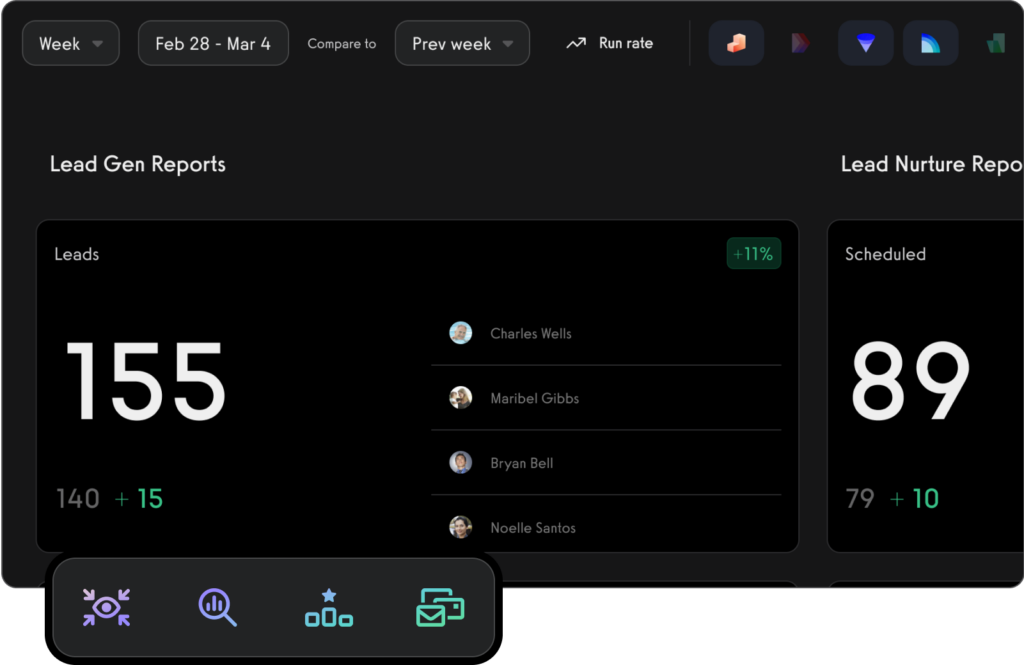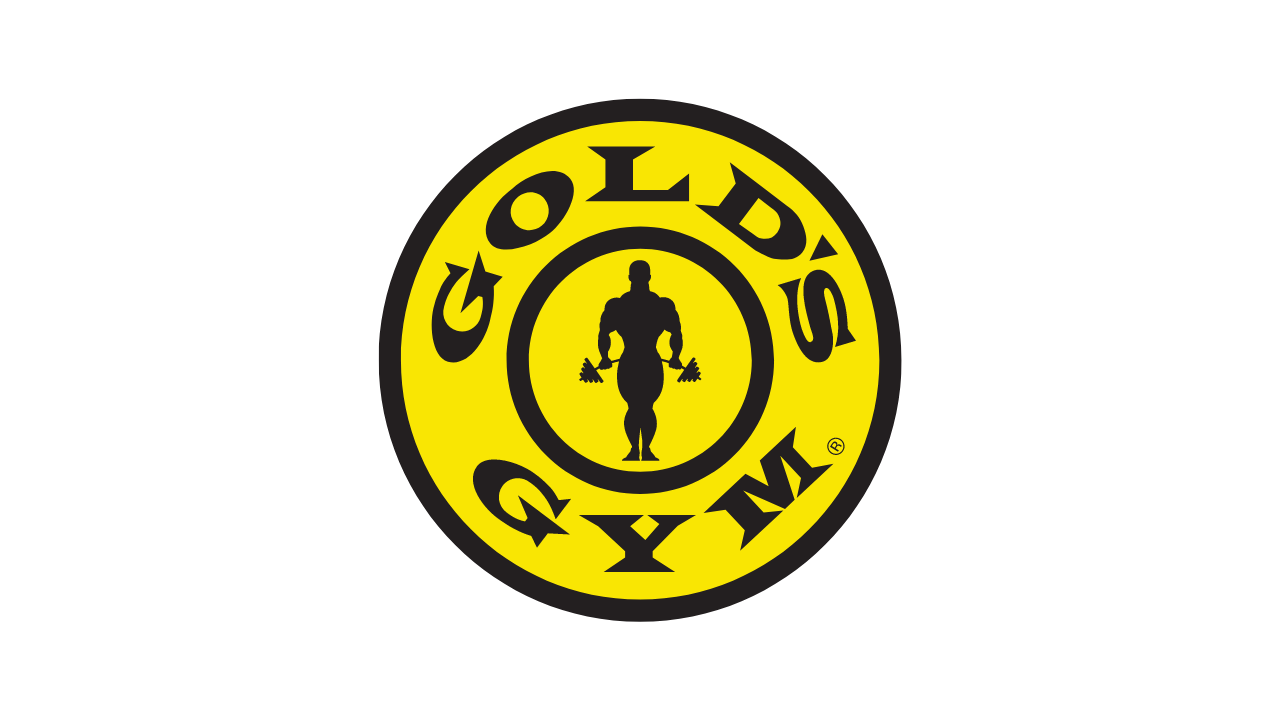How much do gyms spend on marketing?
On average, gyms typically allocate around 5-12% of their total revenue towards marketing efforts.

While the average gym allocates around 5-12% of their total revenue toward gym marketing budget, the exact percentage depends on factors such as the gym’s size, business model, target audience, and competitive landscape. Larger chain gyms tend to spend more on digital ads, influencer partnerships, and video marketing, while smaller independent gyms may focus on community engagement, referral programs, and local sponsorships. Below is a table outlining different marketing budgets based on gym size and type:
| Gym Type | Marketing Budget (% of Revenue) | Common Marketing Channels | Estimated Monthly Spend (Based on $500K Revenue) |
|---|---|---|---|
| Boutique Studio | 8-12% | Social media ads, influencer collaborations, referral programs | $3,300 – $5,000 |
| Large Gym Chain | 10-15% | Digital ads, TV/radio, large-scale promotions | $4,100 – $6,200 |
| Franchise Gym | 7-10% | National brand campaigns, paid search ads | $2,900 – $4,100 |
| Independent Gym | 5-8% | Local SEO, community events, print advertising | $2,000 – $3,300 |
| High-End Luxury Gym | 12-15% | Exclusive events, premium influencer marketing | $5,000 – $6,200 |
| CrossFit / Functional Gym | 6-9% | Community partnerships, referral incentives | $2,500 – $3,750 |
Using Exercise.com ensures that every dollar spent on fitness marketing generates the highest return. With automated marketing campaigns, referral tracking, and targeted lead conversion tools, gym owners can optimize marketing spend and maximize client acquisition. Whether focusing on social media marketing, influencer outreach, or in-house promotions, Exercise.com provides data-driven insights to make gym marketing efforts more efficient and profitable.
Discover how much gyms spend on marketing! Explore the types of strategies used, factors that affect their budget, and successful gym marketing campaigns. The amount that gyms spend on marketing can vary significantly based on various factors such as the size of the gym, its location, target market, marketing objectives, and overall budget.
However, it’s important to note that this is a general range and individual gym spending can fall above or below this range based on their specific circumstances and marketing strategies. Some gyms may choose to invest more in marketing to aggressively attract new clients and expand their reach, while others may focus more on organic growth and rely on word-of-mouth referrals. Ultimately, the marketing budget for a gym is a decision that should be based on careful consideration of the gym’s goals, target market, and available resources.
Want to make sure your gym marketing spend is put to good use with the best gym management software platform to power your gym business?
See why Exercise.com is the best marketing software for gyms and fitness businesses, and how you can run your entire fitness business in one place.
Send gym and fitness marketing automations: email, SMS, and in-app.

Schedule your fitness client journey.

Use the gym CRM for lead management and fitness retention marketing.

All from your own custom branded fitness apps.


Why Marketing is Key for Gyms
Marketing plays a crucial role in helping gyms stand out in a crowded marketplace. Effective marketing can help gyms differentiate themselves from competitors, build brand awareness, and ultimately drive new member acquisition and retention. Without an effective marketing strategy, gyms may struggle to attract new members or retain existing ones.
In today’s digital age, more consumers are turning to online research before making any purchasing decisions—including gym memberships. If your gym doesn’t have an effective online presence or lack creative marketing strategies that speak directly to your target audience—your gym could be missing out on potential members.
Read More:
Retaining Members with Marketing Tactics
While attracting new members is important for any gym’s success—retaining current members is equally crucial. A well-planned marketing strategy can help keep existing members engaged and motivated throughout their fitness journey.
For example, by offering targeted promotions or creating a gym referral program—gyms can incentivize existing members to continue coming back while attracting new ones at the same time. By keeping in touch with current members through email campaigns or social media engagement—gyms can also encourage them to take advantage of training sessions or classes they may not have tried before.
It’s clear that marketing plays an integral role in the success of any modern-day gym business. The next section will explore how much money gyms typically spend on their marketing endeavors–an insightful topic that every aspiring gym owner should be aware of!
Average Marketing Budget for Gyms
The gym industry is highly competitive, with thousands of gyms vying for the attention of fitness enthusiasts. Marketing has become an essential aspect of the industry to attract and retain members.
But how much do gyms spend on marketing? According to a survey conducted by the International Health, Racquet & Sportsclub Association (IHRSA), fitness clubs and gyms in the United States typically allocate between 2-12% of their total revenue towards marketing efforts.
The percentage varies depending on factors such as gym size, location, and competition in the area. Big chain gyms tend to spend more on marketing than independent gyms due to their larger scale and broader reach.
For example, big box gyms spend much more on marketing. How much does Planet Fitness spend on advertising? According to the Planet Fitness Annual Report, Planet Fitness spends approximately $240 million dollars annually in advertising the Planet Fitness brand. In contrast, smaller independent gyms may not have a significant budget set aside for marketing and may rely more heavily on word-of-mouth referrals from satisfied members.
Read More:
Statistics on the average percentage of revenue that gyms allocate towards marketing
As previously mentioned, IHRSA’s survey found that fitness clubs and gyms typically devote between 2-12% of their total revenue towards marketing efforts. This range can vary widely depending on several factors such as gym size, target audience demographics, location, competition in the area, etc.
For example, a small boutique gym located in a less competitive area may only need to spend around 2-3% of their revenue on advertising efforts such as social media campaigns or referral programs to maintain membership numbers. On the other hand, larger chain gyms located in more competitive areas may have to allocate closer to 10-12% of their budget towards aggressive advertising campaigns involving television spots or billboards.
Comparison between big chain gyms and independent gyms
Big chain gyms often have an advantage over independent gyms when it comes to marketing. They have a higher budget and more resources at their disposal, allowing them to create larger and more effective marketing campaigns. However, independent gyms can also succeed in marketing by utilizing creative and cost-effective strategies such as community events or referral programs.
Independent gyms may also have an advantage over larger chains in terms of creating a more personalized experience for members. By focusing on creating a tight-knit community atmosphere, independent gyms can build loyalty among their members, which can lead to positive word-of-mouth referrals and long-term success without needing to spend as much on advertising efforts.
Types of Marketing Strategies Used by Gyms
Traditional Advertising Methods
When it comes to traditional advertising methods, print ads, billboards, and radio spots are still popular choices for gyms. Print ads can be found in newspapers and fitness magazines and usually include a catchy headline and an attractive image of people working out.
Billboards are strategically placed along busy roads and highways to capture the attention of drivers or pedestrians passing by. On the other hand, radio spots are used to promote gym membership deals or new services to a targeted local audience.
While these methods can reach a broad audience, they can be expensive compared to other forms of advertising. It can also be difficult to measure their effectiveness in terms of lead generation or member conversion.
Digital Marketing Strategies
Digital marketing has become increasingly popular in recent years due to its affordability and ability to target specific audiences. Social media platforms such as Instagram, Facebook, Twitter, and LinkedIn allow gyms to showcase their facilities and engage with potential customers through photos, videos, testimonials, and fitness class live streams.
Email campaigns are another effective digital marketing strategy that allows gyms to communicate directly with their members through newsletters or promotional offers. Proper gym search engine optimization (SEO) is also important for increasing online visibility in search engine results pages (SERPs).
Referral Programs and Word-of-Mouth Marketing
Referral programs incentivize current members to recommend the gym to friends or family members in exchange for rewards such as discounts or free memberships. This helps build trust between the gym and potential customers since they are being referred by someone they know. Word-of-mouth marketing is another powerful tool used by gyms where satisfied customers spread positive reviews about their experiences with the gym through social media platforms or review sites such as Yelp or Google Reviews.
There are various marketing strategies that gyms use ranging from traditional advertising methods to digital marketing and referral programs. Understanding the effectiveness and costs of each strategy can help gyms allocate their marketing budgets more efficiently.
Factors that Affect Gym Marketing Budgets
Location and Competition in the Area
When it comes to gym marketing budgets, location is a major factor to consider. Gyms located in major cities or highly competitive areas may need to allocate more funds towards advertising in order to stand out from competitors. On the other hand, gyms located in smaller towns or rural areas may not need to spend as much since they may not have as much competition.
It’s important for gym owners to research their local market and understand the demographics of their surrounding area. For example, if there are more young professionals in the area, a gym may want to focus on digital advertising methods such as social media and email campaigns.
Gym Size and Target Audience Demographics
The size of a gym can also have an impact on its marketing budget. Larger gyms with more amenities and services may require more advertising efforts to get the word out about what they offer. Additionally, knowing your target audience is crucial when determining how much to spend on marketing.
For instance, if your gym caters primarily to seniors or families with children, you may want to invest in print ads or community events that cater specifically toward those groups. Alternatively, if your target audience is millennials or younger generations who tend to be tech-savvy, you might allocate more resources toward social media advertising and influencer partnerships.
Seasonal Trends in Gym Membership
Seasonal trends can also impact how much gyms spend on marketing throughout the year. Certain times of year tend to see an influx of new gym memberships due to New Year’s resolutions or summer body goals.
It’s important for gym owners and marketers alike to plan accordingly for these times by increasing their ad spend during peak months. Additionally, seasonal trends can vary based on location as well.
For example, coastal cities might see an increase in gym memberships during the summer months when people are more likely to hit the beach and want to get in shape. By staying on top of these trends and adjusting marketing efforts accordingly, gyms can maximize their budgets and attract new members year-round.
Case Studies: Successful Gym Marketing Campaigns
Examples of innovative marketing strategies used by successful gym chains
Gym chains have been known to invest heavily in marketing campaigns to attract and retain members. One of the most successful campaigns was Planet Fitness’ Judgement Free Zone campaign. This campaign targeted people who felt intimidated or judged by traditional gyms and created a welcoming, non-judgmental environment.
The campaign included ads on TV, radio, and billboards, as well as social media posts and influencer partnerships. Another successful campaign was Equinox’s Commit to Something campaign.
This campaign encouraged people to commit to something they were passionate about and showcased how Equinox could help them achieve their goals through fitness. The campaign included print ads in magazines like Vogue and Vanity Fair, as well as social media posts featuring celebrities such as Naomi Campbell.
Analysis of how these campaigns impacted their member acquisition rates
The Judgement Free Zone campaign helped Planet Fitness become one of the fastest-growing and most successful gym chains in the US. Since launching the ad campaign in 2012, Planet Fitness has seen a steady increase in membership numbers each year.
The non-intimidating atmosphere created by this advertising has been an effective draw for many consumers who previously avoided traditional gyms due to anxiety or insecurity. Equinox’s Commit to Something Campaign also proved successful with membership growth increasing and better retention rates for existing members since its launch in 2017.
By encouraging members to commit themselves not just physically but mentally too allowed the gym chain to tap into that drive many individuals possess for personal achievement. Overall it’s clear that effective marketing campaigns can have a significant impact on gym membership acquisition rates, especially when those campaigns tap into emotions that resonate with their target audience such as empathy or pursuing personal passions..
Understanding Gym Marketing Budgets
After analyzing the data, it is clear that gyms of all sizes and types understand the importance of marketing to attract and retain members. While there is no one-size-fits-all approach to gym marketing budgets, it is helpful to keep several factors in mind when creating a budget. First, the location and competition in the area can greatly impact how much a gym needs to spend on marketing.
If there are several other gyms in the same area competing for members, then a larger budget may be necessary. Additionally, if the gym is in a highly populated city with lots of potential customers, then more advertising may be needed.
Secondly, understanding your target audience demographics can help inform which types of marketing strategies will be most effective. Younger audiences may respond best to social media campaigns while older audiences may prefer more traditional advertising methods such as print ads or radio spots.
Keeping up with seasonal trends in gym membership can help gyms allocate their budgets effectively. For example, January is often referred to as “New Year’s resolution season” where people are more likely to join a gym.
Therefore, it may make sense for gyms to increase their marketing efforts during this time. Overall, while it can be overwhelming for gyms to decide how much they should spend on various marketing strategies and campaigns, taking into account these key factors can help create an effective budget that attracts and retains members for years to come.
Want to take your gym to the next level with world-class software?

How much is the Planet Fitness advertising budget?
The Planet Fitness advertising budget is substantial, with the company spending over $200 million annually on marketing efforts. The Planet Fitness marketing strategy focuses on national ad campaigns, digital marketing for gyms, and sponsorships, such as their well-known New Year’s Eve partnership. Their marketing efforts include TV commercials, social media promotions, and referral programs to attract new members.
How much is the Anytime Fitness advertising budget?
Anytime Fitness invests significantly in marketing for gyms, though its advertising budget is lower than Planet Fitness. While specific figures are not publicly available, Anytime Fitness relies on localized digital marketing for gyms, social media campaigns, and community outreach. Their franchise model encourages owners to manage local advertising efforts, making the total ad spend highly variable.
What is the average fitness marketing agency cost?
The average fitness marketing agency cost varies based on the services provided. Small gyms may spend $1,000–$5,000 per month on digital marketing for gyms, while larger gym chains can invest $10,000 or more. Full-service marketing health clubs agencies that handle PPC advertising, social media management, and branding campaigns typically charge $3,000–$15,000 per month.
What are the best gym marketing companies?
Some of the best gym marketing companies include:
- Loud Rumor – Specializing in lead generation and gym digital marketing
- Gym Launch – Focuses on gym growth strategies and sales funnels
- Fitness Revolution – Offers business coaching and marketing for gyms
These agencies help gyms optimize their fitness industry marketing strategies for better member acquisition and retention.
Read More: Best Gym Marketing Companies
How much can a gym pay for new gym member acquisition?
The cost of new gym member acquisition varies, but gyms typically spend between $50–$150 per new member, depending on advertising for gyms strategies. Digital marketing for gyms, referral programs, and local events can reduce acquisition costs while increasing membership retention.
What is a good gym TV advertising budget for a large gym vs. a small gym?
A large gym may spend $50,000–$500,000 per year on TV advertising, while a small gym may allocate $5,000–$25,000. The Planet Fitness ad campaign is an example of a high-budget gym advertising strategy, featuring national TV commercials to boost brand awareness. Small gyms often focus on localized TV ads, digital marketing, and social media promotions for cost-effective marketing.
How much did Planet Fitness pay for New Year’s sponsorship?
Planet Fitness reportedly spends millions annually on its New Year’s Eve sponsorship with Times Square. The exact amount is undisclosed, but estimates suggest the cost is around $5–$10 million, reinforcing the Planet Fitness marketing strategy of aligning with major events to maximize exposure.
How much should a gym invest in marketing per month?
A gym should invest 5–10% of its monthly revenue into marketing for gyms. Small gyms may spend $2,000–$5,000 per month, while larger fitness chains might allocate $20,000 or more. Effective fitness marketing strategies include PPC for gyms, social media advertising, and referral programs.
How much does PPC for gyms cost?
PPC for gyms can cost between $1–$5 per click, with average monthly budgets ranging from $500–$10,000 depending on location and competition. Planet Fitness marketing jobs and agencies specializing in gym digital marketing use PPC ads on Google and Facebook to drive gym memberships.
What is Loud Rumor pricing?
Loud Rumor pricing varies based on services provided, but most gym owners can expect to pay $3,000–$10,000 per month for fitness marketing strategies, including lead generation, social media ads, and email marketing. As a top marketing agency for gyms, Loud Rumor helps fitness businesses scale through targeted advertising campaigns.
Read More: Loud Rumor











